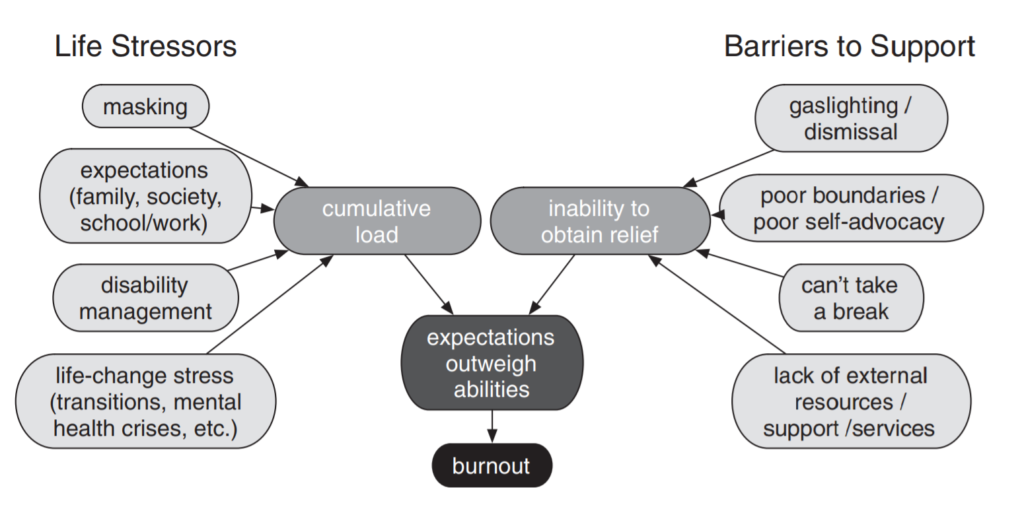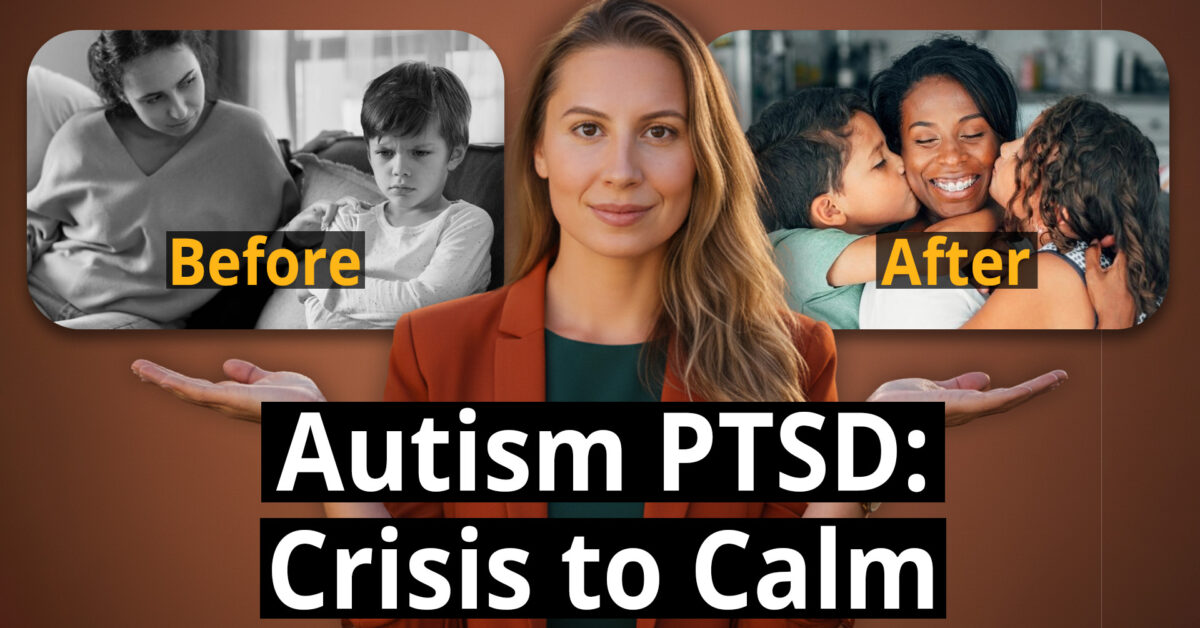My last post was all about the introduction of what autistic burnout is. I got several questions from parents who said they have young children, and they were asking can a young child have autistic burnout, so let’s look into that.
Why try to understand autistic burnout?
“Autistic Burnout” is starting to be defined and quantified by researchers. This is a new topic. This is new research published in 2020 trying to quantify what high functioning older people with autism feel. They’ve termed it ‘autistic burnout.’
And it is from a life of chronic stress that can lead to distress, loss of work, school, health, quality of life, and even suicidal behavior.
Scientists wanted to better understand what high functioning adults with autism go through in life. Parents sent me questions like, “Well, I don’t have an older child. I have a younger child. Can young children experience Autistic Burnout?” And so this post is all about how it relates to younger children with autism.
Can children experience ‘Autistic Burnouts’?
It’s described as being cumulative, right? So it’s a lifetime of chronic stress. Children can experience autistic burnout when they get older, but it obviously starts when they’re younger. Autistic burnout isn’t something that just mysteriously happens when they’re 18. It’s not like that. It doesn’t just come out of the blue.
It’s cumulative. So yes, it’s essential if you have a younger child to be mindful of autistic burnout because you can address it when they’re young and not have it build up and then deal with it when they’re older.
There is no need to wait until your child is older and potentially experiencing autistic burnout to address it. Address it when they’re young.
This is part of the results from the research in 2020 that really started to quantify what autistic burnout is. You can see here in the life stressors – masking.
‘Masking’ is when someone feels they have to pretend or behave a certain way when maybe that’s not how they truly feel. This is something that people on the higher end of the autism spectrum deal with a lot. When your child is younger, you can talk to them about their behaviors and if they feel like they’re true to who they are. If they’re higher functioning, this is the conversation that you can have with them. If they’re not, then masking typically is not going to be an issue for them – whether they’re younger or older.
And the next issue for the life stressors might be something to address, especially if your child is on the lower functioning side.
‘Expectations,’ regardless of where your child is on the autism spectrum, they might have expectations that they put on themselves. They might feel expectations from family, from school, from therapists, from doctors, and it’s really important to handle expectations.
It’s important when looking at any goals to ask yourself, “Is this something that my child really has the capabilities of doing?”, regardless of where they are on the functioning aspect of the spectrum.
Having mutually agreed upon expectations is something that can be worked on regardless of their age. Many of these things in this figure from the research article can be addressed when they’re younger. You don’t have to wait for these to build up!
Barriers to Support – (gaslighting and dismissal)
Suppose there’s an issue your child is dealing with, regardless of whether they’re high functioning or low functioning. In that case, it’s important not to dismiss them, and I know many of you are not. If you’re reading this, you are a very dedicated and very loving parent that I know for sure.
So you might not be dismissing them, but maybe they have a problem at school, and their teacher’s like, “Oh well, you just need to figure it out,” and their feelings, their abilities, what they’re trying to communicate is being dismissed. Or maybe you’re going to a doctor, and the doctor’s like, “Yeah, that’s just autism.”
These are all barriers to support that regardless of how old they are if they’re left to build up, this is where that burnout happens when they’re older.
Finding a good functional medicine doctor when they’re younger, when they’re five or six or even three can help with addressing their medical needs. There’s no reason to wait to find quality health care.
These are all things that can be addressed when they’re younger. Asking for a break, teaching boundaries, these are all absolutely fantastic things that children with autism, regardless of their functioning – you can address this with them. You really can.
I love doing this with my clients, so regardless of functioning level, these issues can be addressed, and they can be addressed when your child is younger so that you don’t have this burnout, this chronic life of stress. This is not what we want for our children. The younger and younger you can address these different issues, the better it is for your child.
Conclusions
The conclusion for the research is autistic burnout is a syndrome conceptualized as resulting from chronic life stress and a mismatch of expectations and abilities without adequate support.
These are things that can be addressed regardless of the functioning level of your child and regardless of their age.
Next steps for this work
This research was small. It was just the beginning, but it’s helpful. So this work will be expanded upon. I’m sure, and it’s important. Because not only do they need a control group, but they need to include a diverse group of people with autism.
This study focused only on high functioning people with autism – they could speak, they could do masking. So to really understand autistic burnout, obviously, the different levels of functioning and autism need to be included to understand this.
Learn from those ahead of you. This research just came out in 2020. You can apply it to your child whether they’re three, whether they’re seven, whether they’re 10, whether they’re 15, whether they’re 20 and onward.
Learn from the parents and the children that are ahead of you, and you can help address many of these issues now when your child is younger.
And the best first step in healing autism is making sure your child’s style is nourishing them and that they are getting quality sleep. These are the best first two steps to take for autistic burnout.
Because when everyone’s sleeping, and everyone has a nice nourished full belly that is able to digest food, then life is a lot easier to handle.
Sleep and diet are so important and really the best first steps to take regardless of how old your child is, regardless where they are in the functioning levels of autism.





